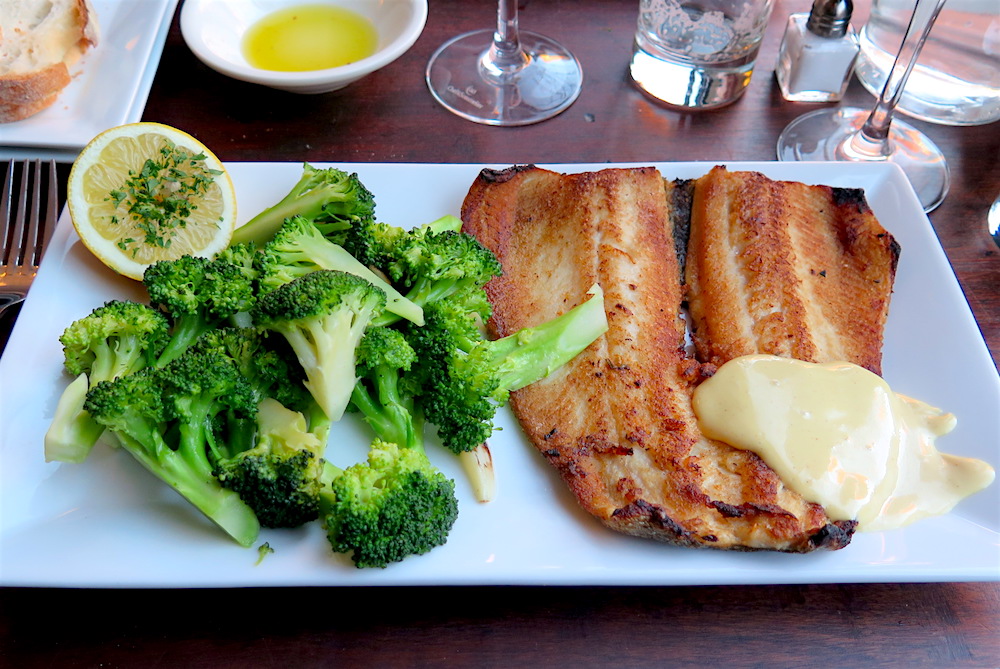During the dog days of summer in 1988, my friend who lived on 87th Street called and invited me to lunch. “There’s a brand-new Italian restaurant that just opened on 88th and Columbus,” he said, excitedly. “A piece of Tuscany in New York.” Earlier that year in April, Cher had won an Oscar for Moonstruck for her performance as an Italian-American in the throes of a lunar love spell—so a restaurant named Bella Luna seemed entirely in keeping with the times.
For nearly thirty years, Bella Luna has served traditional Italian cuisine from its little corner of Tuscany on the Upper West Side. “We’re a neighborhood community spot,” states Angie Noll who has managed the restaurant for the past three years.
As all New Yorkers know, neighborhoods change—and favorite restaurants disappear. What true New Yorker hasn’t experienced that dispiriting sense of loss upon encountering the scrawled sign Lost Our Lease: We’re Moving and the brown-papered windows (where once there were café tables)? Suddenly, the city’s best French fries are but a distant memory, that vegetable pot pie with the extremely flaky crust now available only in the past.
Fortunately, some restaurants fare better than others. When the inevitable happened and the rent soared, Bella Luna looked across the street. On the opposite corner, the flower shop had closed and Bella Luna commenced its relocation into an 1893 building, layered with pentimento.
Upper West Siders still recall the strudels and Hungarian scones when Grossinger’s Uptown Bakery claimed the space from 1981 through 1999—and prior to that, the corner was home to a well-known speakeasy and restaurant known as Bill Pogue’s Bar & Grill, which remained in residence for more than 30 years until 1968.
What hardly anyone recalled was the Prohibition-era mural that was rediscovered behind two walls during renovation. According to restoration artist Mark Rutkoski, the unsigned triptych that adorns the restaurant’s southern wall probably dates from Prohibition and was possibly restored once before in the 1960s. While debate continues about the specific locales depicted, all three panels are remarkably evocative of Central Park in spring, summer, and autumn.
Apart from the newly-unearthed mural, the reopened restaurant also features mahogany table tops with wrought-iron table bases created by Arturo Di Modica, the same artist who famously installed his sculpture Charging Bull in front of the New York Stock Exchange during a dark December night in 1989.
Bella Luna owner Turgut Balikci has retained the marble eggshell chandeliers that emit a golden moon glow above the heads of neighborhood regulars who have returned for the restaurant’s simple Italian classics. The kitchen is helmed by Executive Chef German “Primo” Angelo who trained under Mario Zimbelli—Bella Luna’s chef of 25 years. Insalate include a nicely tangy Caesar and a vibrant Sicilian salad comprised of fennel, radicchio, capers, and olives dressed with lemon and olive oil.
The signature pizza from the traditional brick oven is dotted with wild mushrooms, onion, fontina cheese under a drizzle of truffle oil—all but guaranteeing umami heaven. One of the most popular entrées—and with good reason—is the pan-seared trout served with a lusciously rich Dijonnaise. Beautifully plated with broccoli, this is simple Italian fare done with elegance and taste.
A tartufo quartered like an apple is a decadent dolce, certain to please anyone with an ice cream addiction. Similarly, the wild berry crostata is a reminder of summer’s bounty, as delicious as a picnic on the Great Lawn of Central Park.
As Lillian Hellman wrote in her 1973 memoir Pentimento, pentimento is “a way of seeing—and then seeing again.” With the reopening of Bella Luna and the rediscovery of a long-lost mural, New Yorkers have a new perspective on a familiar corner.






























Pingback: Joanne Rubino